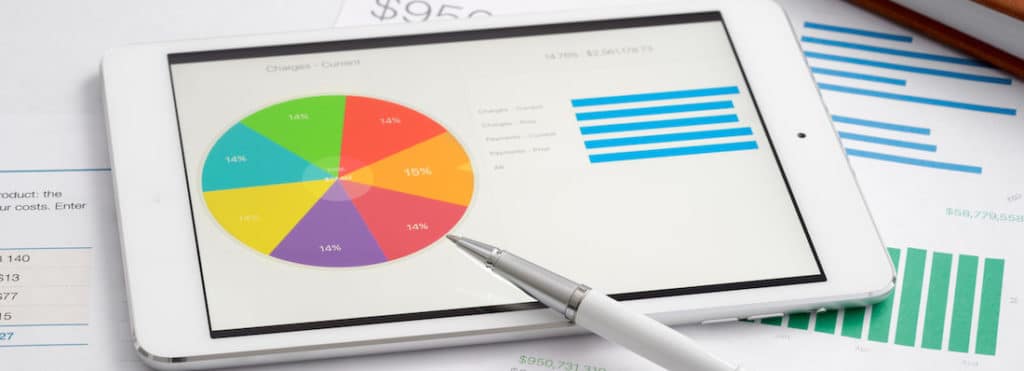Nearly all marketers use Google Analytics to understand more about the traffic to their sites. A lot of us spend hours every month making traffic reports and searching for signals in the data. But how many marketers are making mistakes or misunderstanding what that data really means?
I interviewed SEO pro Andy Crestodina to learn more about modern SEO, based on his popular session at MarketingProfs’ B2B Forum. Here are some of his tips.
Set up Google Analytics properly from the start.
Crestodina says marketers’ biggest mistake is not taking the time to set up Analytics properly. Before you jump into your reports, he recommends taking these steps:
- Set up goals: Tell Analytics the URL of your thank-you pages so you can track conversions.
- Set up filters: Tell Analytics what your IP address is, so you don’t appear in your own stats.
- Set up Search Console: Connect Analytics to Google Search Console so you can see the Queries report in Analytics.
Invest a little time in learning.
Once you’ve watched the videos at the Google Analytics Academy, Crestodina recommends reading the book “Google Analytics Breakthrough” for guidance on setup and analysis.
It’s worth the effort, he says: “After a few hundred pages, you’ll know more than 95 percent of digital marketers.”
Use Analytics to answer questions, not just generate reports.
“Most people just use Google Analytics for reporting, not analysis,” he says. “They wake up in the morning, look at their favorite chart, then smile if it’s up and frown if it’s down. That’s it. They move on and go do something else.”
If this describes how you use Analytics, he suggests considering how this is affecting your marketing. His answer: “It’s not. Only actions affect outcomes. The real purpose of Analytics is to help you take better actions, and to help you make decisions based on data.”
He suggests rethinking how you use Analytics. His standard learning process is based on asking questions and using Analytics to find answers:
If you don’t know what questions to ask, here are a few of his suggestions to get you started. Each of these questions can be answered in under a minute in Analytics, he says:
- Are the labels in our navigation doing a good job of guiding visitors to our most important pages?
- Do these top pages work well for mobile visitors?
- Are people spending time in this section?
- Is there anything in here that could be removed?
- How are people finding our website?
- Where do people typically enter?
- Where are people leaving from?
- Do people who come from different places (specific social networks or email newsletters) behave differently? What actions are they most likely to take?
Once you change the way you think about Analytics, you’ll never go back, he says: “Alarms will go off in your mind whenever someone wants to take action based on opinion.”
Put yourself in the user’s shoes.
Crestodina describes the thought process he used to work on the site of a client that wanted to improve its recipe page.
He started by asking questions about the visitors:
Q: How are people getting to this page? What does it look like for them?
A: Sixty percent of visitors come directly to this page from search. Sixty-five percent of them are on mobile devices.
Based on that information, he looked at the page on his phone with fresh eyes and pretended it was his first experience with the page. He saw two calls to action, a little “Subscribe” link and a big “Shop Now” button. When he scrolled down, he saw six recipes.
He asked:
Q: Are people using those two calls to action?
A: Yes, 2-3 percent of people subscribe, but almost no one clicks to “shop now.”
And:
Q: Which recipes are the most popular on this website?
A: Mac and cheese. By a lot!
He started to get some ideas about how to improve the page. He removed the “Shop Now” button to help people get to the recipes faster. He left the “Subscribe” link since it was working. And he made sure that the mac and cheese recipe was one of the six featured on the page.
The next step? Asking whether making those changes to the recipe page helped visitors. “The answer will be in the behavior data for the page,” he says. “If it worked well, the bounce rate and time on page should go down, and the percentage of people who proceed to a recipe (or subscribe) should go up.”
Study the path people take on your site.
If you’re looking for one go-to report in Google Analytics, Crestodina points to the User Flow report. He says that most people skip it, but it’s important because “every website has a ‘top path.’ This is the most common flow of visitors through the site. But most people don’t know what theirs is.”
“Think about it this way,” he says. “If your website was a city, there would be a highway flowing through it. But most marketers don’t know where that highway is, even though it’s right there in the Analytics.”
When you know where your highway is, he says, you know where to put your “billboards” — your most compelling messages, evidence and testimonials. If web visitors are getting stuck, you can learn where to redirect traffic more deliberately through better “street signs” (navigation labels).
His final advice for marketers who are overwhelmed by their Analytics: “Analytics is really a very straightforward, practical skill. It’s not a daily chore. It’s something you glance at when you need insights and information, like the dashboard of your car. The more value you get from it, the more comfortable you’ll become with it. Learning to do analysis is a lifelong process. You’re never too old or young to start.”
